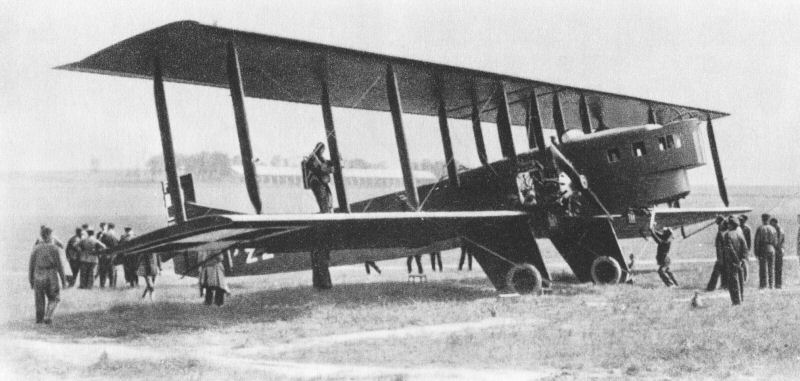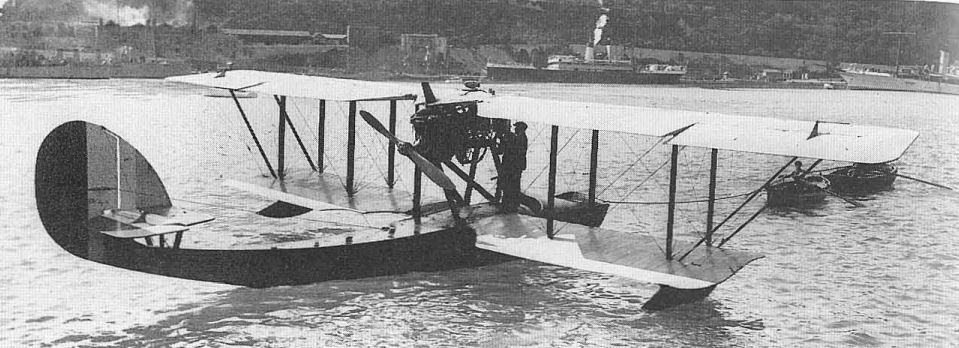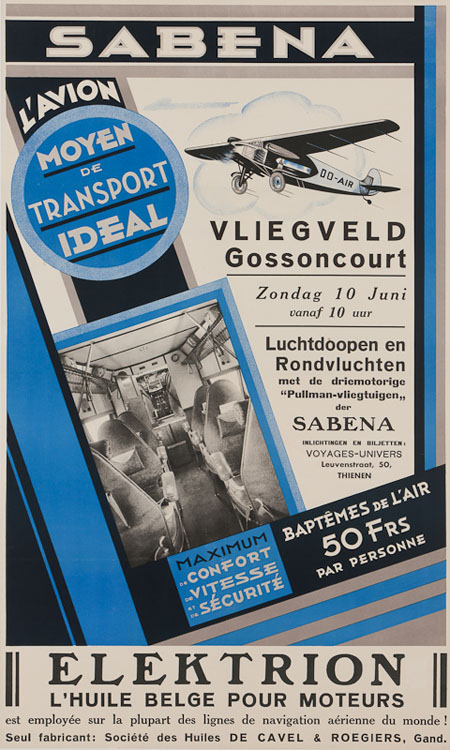In February 1919, the former WW1 pilot Georges Nelis published in Bruxelles a 48-page pamphlet: "The development of Belgium through its aviation". Nelis' aim was to prove how the creation of a powerful commercial air service could be vital to help the economic and political growth of the country.
The proposal quickly found enthusiasts among the nation's establishment, including the young king Albert I. After a few weeks, the SNETA (Syndicat National pour l'Etude des Transportes Aériens) was created.
In April 1919, Nelis carried out his first experimental flight, carrying two passengers on the London-Paris-Bruxelles route. August of the same year saw the birth of CENAC (Comitè d'Etudes pour la Navigation Au Congo), whose aim was to open commercial routes to the Belgian colony of Congo.
SNETA registered its first aircraft on 19 March 1920: one Fokker D.VII, three Breguet XIV, three De Havilland DH.9 and three Rumpler C-IV. On 25 May the carrier established its first official route, with a mail service to London.
 |
| Farman Goliath |
The first african route was launched in July, using three G.L. 40 flying boats for the 580km Leopoldville-N'Gombe trip.
A second african route was added in 1921 between N'Gombe and Lisala, and on 1 July of the same year Leopoldville was connected with Stanleyville. The 1740km distance between the cities was covered in three days, compared to the 17 required by the usual river journey.
 |
| The G.L. 40, also known as Levy-Lepen, were the first aicraft used on colonial routes |
In the meantime in Europe, SNETA had bought new aircraft: one Ansaldo A-300c, one Farman Goliath and one De Havilland D.H. 4. With these new machine, more suited for commercial flights, it was possible to open new routes to Paris, Amsterdam and Rotterdam.
On 1 June 1922, SNETA and CENA suspended all flights. The suspension was planned and temporary, as the two entities were merged into the new SABENA (Societé Anonyme Belge d'Exploitation de la Navigation Aeriénne).
The fleet consisted of:
- four D.H. 9
- three Rumpler C-IV
- one Goliath
- four SPAD 33
- one A-300
 |
| SABENA's OO-AHG W.8e |
Despite the new acquisitions, the airline still needed to find an aircraft with range and passenger capacitiy. The answer to this problem came into the shape of the Handley Page W.8b; derived from the O/400 heavy bomber, it was able to carry 12 passengers in a closed cabin, an enormous improvement compared to all other civilian aircraft. SNETA purchase one machine, and then set up the SABCA factory starting licensed production of the aircraft. After three models, production shifted to the enhanced W.8e model, powered by two 365 hp Rolls-Royce Eagles and one 233 hp Siddeley Puma.
SABENA was the first commercial airline in the world operating three-engined aircraft, and started with them the Rotterdam-Bruxelles-Strasbourg-Basel route on 14 July 1924.

No comments:
Post a Comment